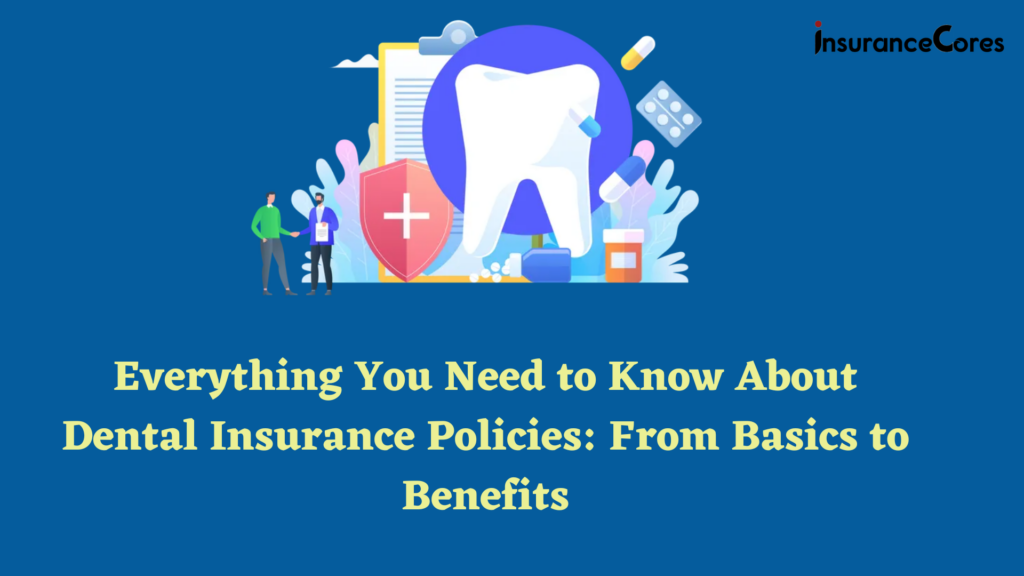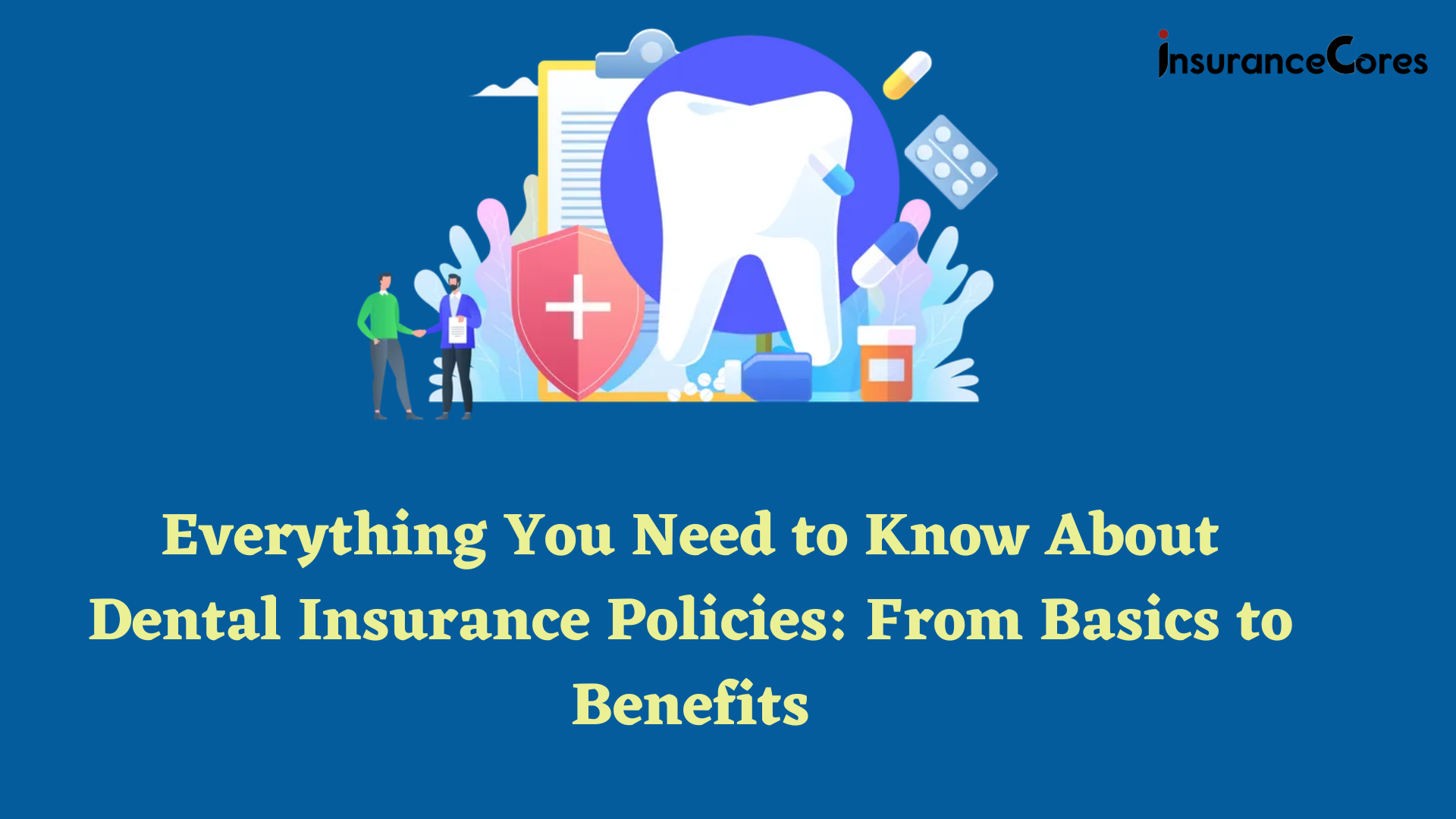Dental insurance might not be the hottest topic at the dinner table, but when a toothache strikes or you’re staring down the barrel of a hefty dental bill, you’ll wish you knew more about it. Fear not! By the end of this article, you’ll be a dental insurance aficionado, ready to tackle anything from cleanings to crowns without breaking a sweat—or the bank.

Why Should You Care About Dental Insurance?
Imagine this: You’re enjoying a leisurely evening, munching on some popcorn during a movie night. Suddenly, you feel a sharp pain in your tooth. Cue the frantic Google search and a realization that dental procedures can cost an arm and a leg (or a tooth and a jaw, in this case). This is where dental insurance swoops in like a superhero, saving your teeth and your wallet.
Dental insurance helps cover the cost of dental care, from routine cleanings to more serious procedures. It’s like having a financial cushion for your teeth. Without it, even a simple cavity can turn into a financial nightmare. With it, you can keep your smile healthy without losing sleep over the costs.
What is Dental Insurance?
Dental insurance is a type of health insurance designed to pay a portion of the costs associated with dental care. It functions similarly to health insurance but specifically covers dental expenses. These policies typically include coverage for preventive care (like cleanings and X-rays), basic procedures (like fillings), and major procedures (like root canals and crowns).
How Does Dental Insurance Work?
Dental insurance plans typically operate on a “100-80-50” coverage structure:
- 100% coverage for preventive care
- 80% coverage for basic procedures
- 50% coverage for major procedures
Let’s break that down with an example:
- You go for a routine cleaning: The insurance covers 100%, so no cost to you.
- You need a filling: The insurance covers 80%, and you pay the remaining 20%.
- You require a crown: The insurance covers 50%, and you handle the other 50%.
Most plans also have a maximum annual limit, meaning they will only cover expenses up to a certain amount each year. Once you hit that limit, you’ll have to pay out-of-pocket for any additional care.
Types of Dental Insurance Plans
Navigating the world of dental insurance can feel like being lost in a maze, but understanding the different types of plans can make it a lot easier. Here are the main types of dental insurance plans:
1. Preferred Provider Organization (PPO) Plans
PPO plans are the most common type of dental insurance. They offer a network of dentists who have agreed to provide care at reduced rates. You can see any dentist you like, but you’ll pay less if you stick to the network.
Pros:
- Flexibility to choose any dentist
- Lower costs within the network
Cons:
- Higher premiums
- Some costs if you go out-of-network
2. Health Maintenance Organization (HMO) Plans
HMO plans require you to choose a primary care dentist from their network and get referrals to see specialists. These plans often have lower premiums and no annual limits.
Pros:
- Lower premiums
- No annual maximum
Cons:
- Limited to network dentists
- Requires referrals for specialists
3. Indemnity Plans
Indemnity plans, also known as fee-for-service plans, offer the most freedom to choose any dentist. The insurance company pays a set portion of your total charges, and you cover the rest.
Pros:
- Freedom to choose any dentist
- No network restrictions
Cons:
- Higher out-of-pocket costs
- May require you to pay upfront and get reimbursed
4. Discount Dental Plans
While not insurance per se, discount dental plans offer reduced rates on dental care in exchange for an annual membership fee. You pay the dentist directly at a discounted rate.
Pros:
- Lower overall costs
- No waiting periods or annual limits
Cons:
- Not insurance, so no coverage
- Limited to participating dentists
Understanding Dental Insurance Terms
Before diving deeper, let’s clarify some key terms you’ll encounter in dental insurance:
Premium
This is the amount you pay (usually monthly) for your dental insurance plan. Think of it as your ticket to the dental care world.
Deductible
The amount you pay out-of-pocket before your insurance starts to cover expenses. It’s like the cover charge at a club—you have to pay to get in before enjoying the benefits inside.
Copayment (Copay)
A fixed amount you pay for a covered dental service after meeting your deductible. It’s your share of the bill each time you visit the dentist.
Coinsurance
The percentage of the cost you pay for covered dental services after meeting your deductible. For example, if your plan covers 80% of a filling, you pay the remaining 20%.
Annual Maximum
The maximum amount your dental insurance will pay for covered services in a year. Once you hit this limit, you’re on your own financially until the new policy year begins.
Waiting Period
The time you must wait after enrolling in a dental plan before certain procedures are covered. It’s like a probation period for your teeth.
Benefits of Dental Insurance
Why should you fork out money for dental insurance? Here are some compelling reasons:
1. Cost Savings
Without insurance, dental care can be incredibly expensive. Dental insurance helps reduce out-of-pocket costs, making dental care more affordable.
2. Preventive Care
Dental insurance typically covers preventive services at 100%. Regular check-ups and cleanings can help detect issues early, preventing more serious (and costly) problems down the road.
3. Peace of Mind
Knowing you’re covered can provide peace of mind. You won’t have to avoid the dentist out of fear of high costs, ensuring you maintain good oral health.
4. Access to a Network of Dentists
PPO and HMO plans provide access to a network of dentists, often at reduced rates. This can make finding a dentist easier and more affordable.
5. Better Oral Health
Regular dental visits, encouraged by having insurance, can lead to better oral health overall. Healthy teeth and gums contribute to your overall well-being and confidence.
Choosing the Right Dental Insurance Plan
Selecting a dental insurance plan can feel like choosing a movie on Netflix—overwhelming with too many options. Here’s a guide to help you pick the right plan:
1. Assess Your Needs
Consider your current dental health, family history, and anticipated dental care needs. If you expect to need major procedures, a plan with higher coverage for such services might be best.
2. Check the Network
If you have a preferred dentist, make sure they’re in the network of the plan you’re considering. Going out-of-network can be more expensive.
3. Compare Costs
Look at the premium, deductible, copayments, and coinsurance of different plans. Calculate your potential out-of-pocket costs for the care you expect to need.
4. Look for Added Benefits
Some plans offer additional benefits like orthodontic coverage, discounts on cosmetic procedures, or coverage for certain over-the-counter products.
5. Read Reviews and Ask for Recommendations
Check reviews and ask friends or family for their experiences with different plans. First-hand accounts can provide valuable insights.
6. Understand the Fine Print
Carefully read the policy details, including exclusions and limitations. Knowing what is and isn’t covered can save you from unexpected surprises.
Also Read This:
FAQs About Dental Insurance
A: Typically, dental insurance does not cover cosmetic procedures such as teeth whitening or veneers, as these are considered elective treatments. However, some plans may offer discounts on cosmetic services.
A: Most dental insurance plans have waiting periods for certain services, especially for major procedures. Preventive services like cleanings and exams might be covered immediately, but you’ll need to check your specific plan details.
A: If you exceed your annual maximum, you will be responsible for paying 100% of any additional costs for the remainder of the year. The annual maximum resets at the beginning of the next policy year.
A: Yes, you can have multiple dental insurance plans. This is known as dual coverage. The secondary plan can help cover costs that the primary plan does not, but coordination of benefits rules will apply to determine how the plans pay out.
A: Most dental insurance companies have online directories where you can search for in-network dentists by location, specialty, and other criteria. You can also call customer service for assistance.
Conclusion
Dental insurance might seem like a complex and dry topic, but it’s a crucial part of maintaining both your oral and financial health. Understanding the different types of plans, how they work, and what they cover can save you a lot of stress—and money—down the line.
From the basics of premiums, deductibles, and copayments to the intricacies of choosing the right plan for your needs, we’ve covered all the essentials. Remember, the right dental insurance plan is like a good pair of shoes—it should fit well, be comfortable, and support you when you need it most.
So next time you’re at a dinner party and the conversation lulls, impress everyone with your newfound knowledge of dental insurance. You never know, you might just save someone a hefty dental bill—or at least provide a few laughs.
